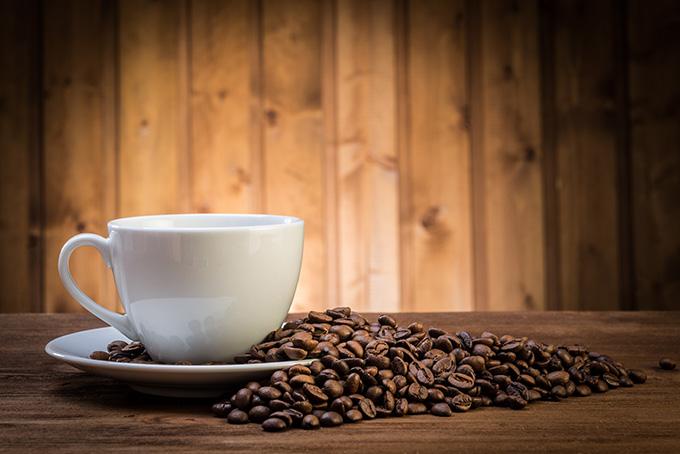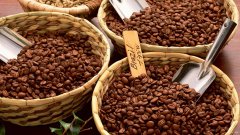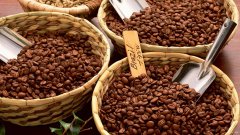cup test| How to perform the cup test, the terminology used for the cup test

For professional baristas, please follow the coffee workshop (Wechat official account cafe_style)
Coffee Cupping, translated as coffee cup test in Chinese, is a very magical and simple method for sensory evaluation of coffee. The quality of coffee is judged by the sense of taste, which is called "coffee cup test". When testing the cup, make the coffee flow back and forth in your mouth and make full use of your sense of taste and smell to feel the flavor characteristics of the coffee. It transforms the subjective and different sensory experience into quantitative data with practical value to guide people's practical decisions, such as buying, selling, sharing experience and so on.
Aroma
The aroma consists of two parts, dry incense and wet incense. After grinding the beans, the first image and the first item to be scored is the dry fragrance, the aroma of coffee flowers, roasted hazelnuts and roasted almonds are all pleasant aromas. Water injection, the broken shell of the wet fragrance gives people more fantasy, honey, lemon, apricot fruit make people salivating.
Sip flavor
Flavor is the first item to be perceived and scored when the coffee liquid drops to 71 ℃ and starts sipping, including various flavors and the sense of smell behind the nose; cup testers can include the tastes they feel in the scoring items, including the various flavors measured or drunk. It can be said that sipping flavor is a very important scoring item, and it is also a basis for testing the characteristics of a cup of coffee sample. The more the better, the higher the score.
Yu Yun
If all kinds of taste or aroma or touch still stay in the mouth after sipping, and the good flavor stays for a long time, such as sweetness, it still stays clearly in the mouth or even spreads after sipping and spitting coffee, then the score of this item will be high, on the contrary, there is no aftertaste, or very short, the score is low.
Acid quality
Good acidity is not like vinegar, which is bright and lively and can also detect many kinds of acidity such as citrus, berries or sweet lemons, as well as the sweet and sour melons like cantaloupe or the crisp acidity of freshly ripe apples. The above acids are of high quality; bad acids are like unripe fruit or acetic acid, and some bad acids are like overripe fruit or rotten fruit, and fermented acid or rotten acid can be detected. The higher the quality, the higher the acid score.
Alcohol thickness
The scoring item is not to measure the taste, it belongs to the substance and touch felt by the mouth, the sense of fat, viscosity and quality all constitute the body;, such as milk and water, the former has a much higher sense of touch, thick soup and clear soup, the consistency and touch of the former are much higher than the latter.
Equilibrium degree
It refers to whether the scoring items of coffee are balanced, for example, the acidity is bright but still sweetens? The touch is sticky but not astringent? Are the various flavors of coffee harmonious? If so, the score of this item will be high.
Sweetness
It not only means that the coffee fruit is harvested in the best ripening period, without immature beans, but also represents the excellent quality of coffee. Only by selecting freshly ripe coffee fruits to treat them into raw beans can we get better sweetness, and there are many kinds of sweetness, such as sugarcane sweetness, caramel sweetness, etc., which can be noted in the evaluation. Coffee usually contains sweetness, so this item will be given a high score as long as it is perceived to be sweet.
Overall evaluation
Is the coffee excellent on the whole, is it attractive to you, is it average, or do you not like her at all?
This scoring item is the overall evaluation of the tester, and it can also reflect his personal preferences. If there is no cup tester to test each type of coffee, there will be no harvest from coffee farmers, and there will be no refreshing drinks in the cup. the true meaning of cup testing is to find better coffee.
The tools needed for cup testing are simple: bean grinders, scales, thermometers, cups, spoons, and the ratio of coffee beans to water are also specified:
Water ratio: 8.25g coffee beans with 150ml water, the water temperature should be 92.2C-94.4C
Cup test cup: toughened glass or ceramic materials should be used
Cup test capacity: between 207ml and 266ml
Cup height: 3 to 3.5 inches
Mouth diameter: 76-89mm, all cups should be made of the same volume, size and material, with a lid.
Cup test spoons: to use antistatic metal material (mostly stainless steel), each spoon capacity can have 4-5ml.
How to test it by cup?
The first step-water injection, soaking: brew and grind all kinds of coffee beans (preferably within 24 hours), grind the coffee to a coarse powder, put the ground coffee powder (particles) into the cup, shake the coffee powder in the cup, smell the dry aroma of the coffee, soak the coffee in the cup according to the ratio of 8.25 grams of powder to 150 ml of hot water at 93 degrees Celsius, and let the coffee soak for 3-4 minutes until the coffee residue shell is formed.
Step 2-smell Aroma: wet fragrance is the intensity of the smell when brewing coffee. Some subtle and delicate differences, such as the characteristics of "flower" or "wine", come from the wet aroma of brewing coffee.
Step 3-broken residue: stir three times on the surface of the cup with a spoon, skim off the foam and dregs, and you can start to taste the coffee with a spoon.
Step 4-tasting: remove the coffee scum with a cup spoon, suck the coffee entrance, feel it in the mouth and spit out the coffee liquid, record your feelings on the cup meter, score according to the requirements of the cup meter, gargle, rinse the cup and test the spoon, and then taste the next coffee.
Important Notice :
前街咖啡 FrontStreet Coffee has moved to new addredd:
FrontStreet Coffee Address: 315,Donghua East Road,GuangZhou
Tel:020 38364473
- Prev

Drip method | demonstration of hand-made coffee with kono filter cup
Professional baristas Please pay attention to Coffee Workshop (Wechat official account cafe_style) Deep Baking Mantenin 15g KALITA Copper Pot KONO 01 filter Cup steaming time 247s Mr. Kono, president of coffee filter cup and coffee pot, has studied delicious coffee for many years, and has designed a series of coffee pots full of pastoral KONO coffee filter cups and log handles. KONO is all coffee in Japan.
- Next

Popular science | genealogy of common varieties of coffee
The exchange of professional baristas please pay attention to the coffee workshop (Wechat official account cafe_style) term explanation before introducing genealogical varieties Coffea / Coffee includes more than 120 species, usually opposite leaves, evergreen shrubs or small trees with horizontal branches. Contains opposite species, one side is flat, and the other side has grooves (right! It's coffee beans! ). Most of the coffee genera
Related
- Beginners will see the "Coffee pull flower" guide!
- What is the difference between ice blog purified milk and ordinary milk coffee?
- Why is the Philippines the largest producer of crops in Liberia?
- For coffee extraction, should the fine powder be retained?
- How does extracted espresso fill pressed powder? How much strength does it take to press the powder?
- How to make jasmine cold extract coffee? Is the jasmine + latte good?
- Will this little toy really make the coffee taste better? How does Lily Drip affect coffee extraction?
- Will the action of slapping the filter cup also affect coffee extraction?
- What's the difference between powder-to-water ratio and powder-to-liquid ratio?
- What is the Ethiopian local species? What does it have to do with Heirloom native species?

